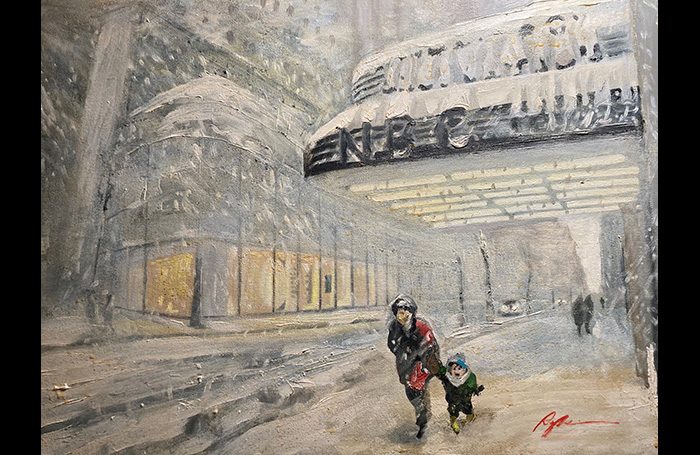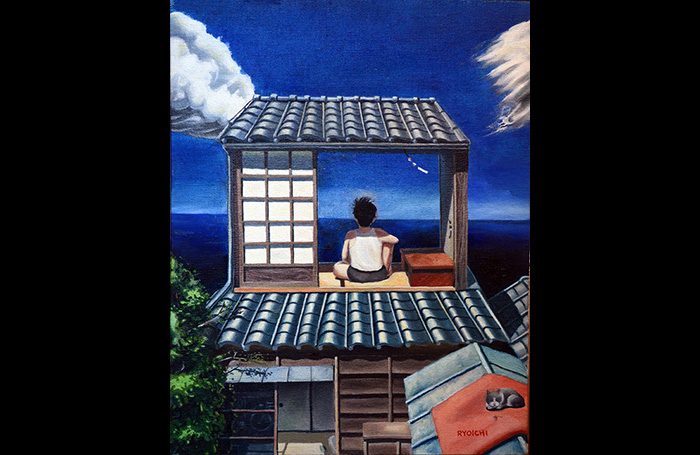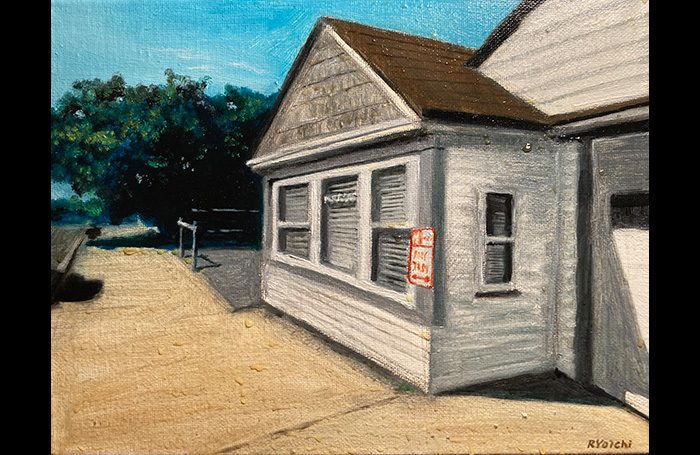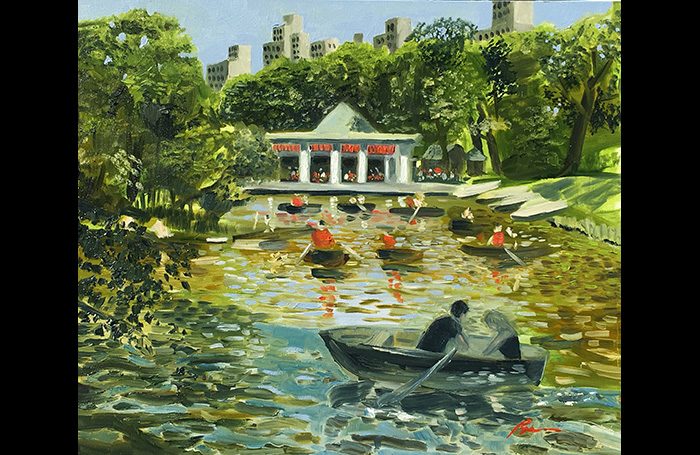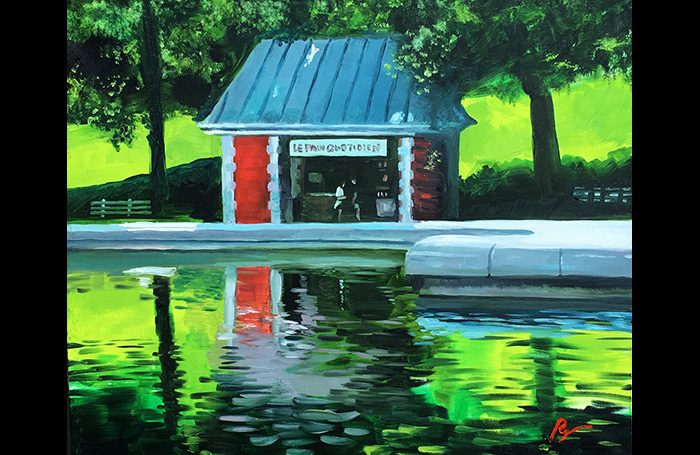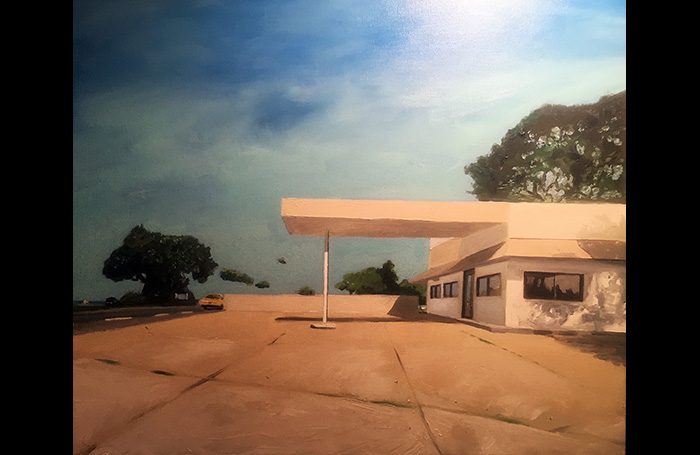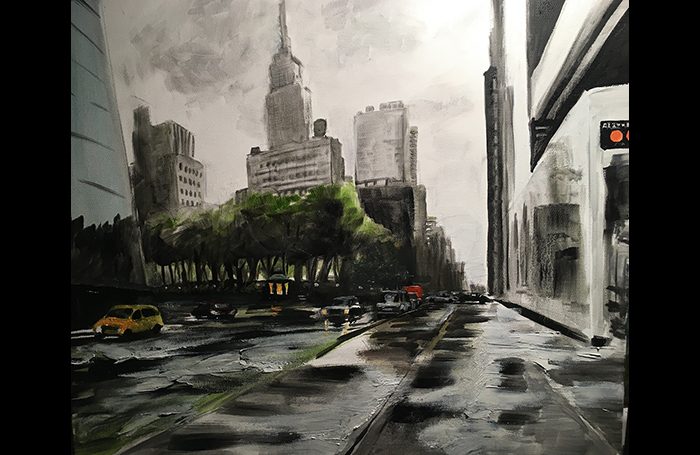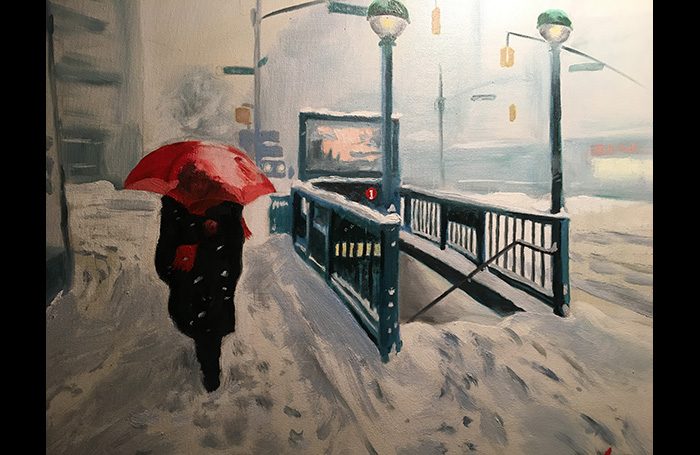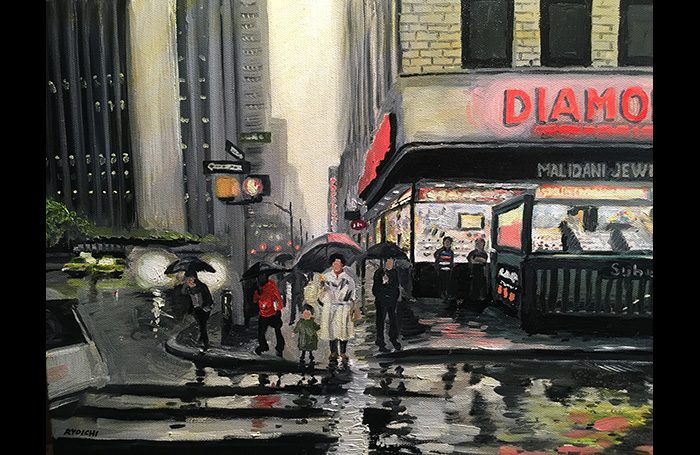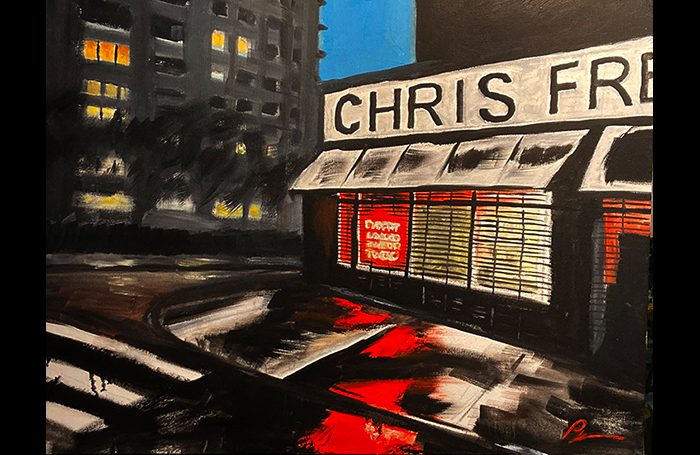![]() FACE BOOK: https://www.facebook.com/ryoichi.miura.5
FACE BOOK: https://www.facebook.com/ryoichi.miura.5
Blog: ryoichimiura.wordpress.com
e-mail: miura@nyseikatsu.com
Born in Kushiro Hokkaido Japan 1956. I usually work as a journalist of the Japanese newspaper SHUKAN NY SEIKATSU published in New York, but since the late 1970s, I have worked on my own paintings in Tokyo and Los Angeles. After coming to New York in 1985, I went through a long, lost period in my art world. I would love to capture ordinary moments and scenes. In the NEW ENGLAND DIARY (August 28, 2016), Anders Cor, Ph.D. who founded Corr Analytics in 2013 addressed my paintings: “Miura painted his first oil painting when he was 13, and has painted ever since. 46 years later, Miura is now 59. The earliest influence from manga is delightfully visible in his current art. Illustrations in his children’s book, ‘Kids in N.Y.,’ (Kaiseisha, Japan, 2003) are eerily angled, imbalanced, falling. [Miura says,] ‘New York City is always moving. I wanted to express its movement and speed of the city.’ Miura is the Edward Hopper (American, 1882-1967) of his moment in New York City. Like Hopper, Miura’s paintings are lonely, urban, stark, transitory, estranged, anxious and tightly cropped. Yet Miura is hotter, faster, and more emotional. Miura, above all, wants to communicate emotion. ‘I see a scene that gives me an emotional response,’ he said.”

